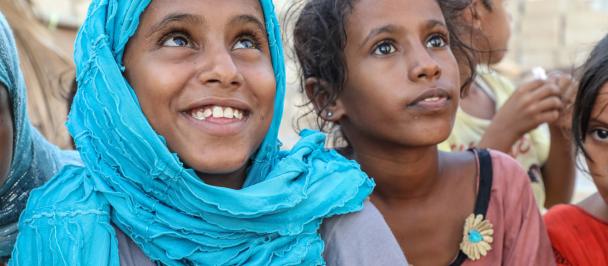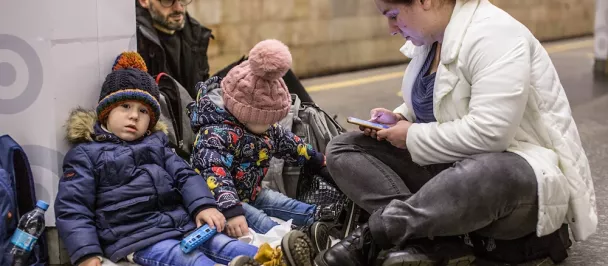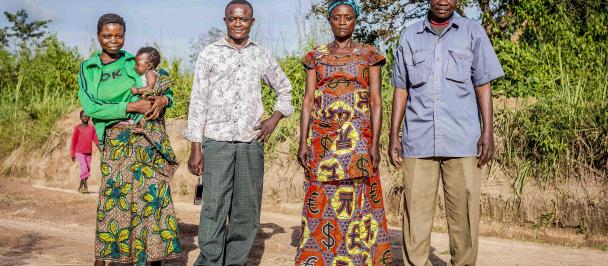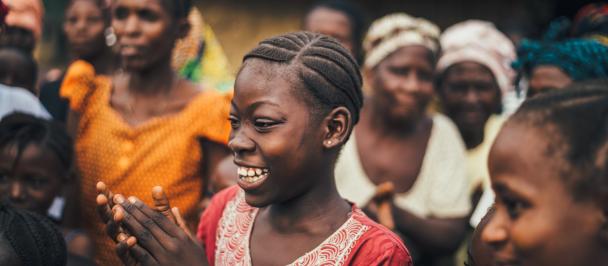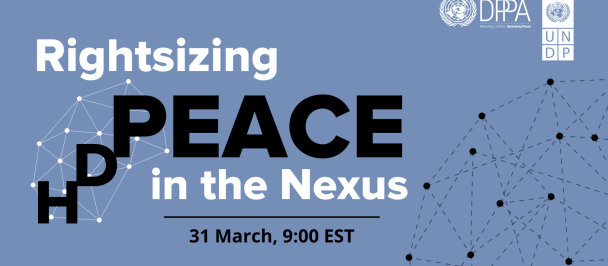Excellencies, distinguished delegates, ladies and gentlemen, I am delighted to have the opportunity to share a few thoughts with you, on behalf of the DPPA-UNDP-UNEP Climate Security Mechanism on addressing climate change, conflict prevention and sustaining peace at this pre-summit event on climate-related security risks.
This is indeed a timely discussion as today is International Peace Day with the theme, ‘Climate Action for Peace’. On the occasion of the Climate Action Summit, we are asked by the Secretary-General to raise commitment and ambition and focus on concrete actions now. One area that deserves our urgent attention is the nexus between climate change and international peace and security and how we address it.
In many countries around the world, the most vulnerable suffer the double burden of climate change and conflict. The Institute for Economics and Peace in its Global Peace Index 2019 estimates that almost 1 billion people are highly exposed to climate hazards, of which 400 million are, at the same time, exposed to ‘low levels of peacefulness’.
It is in these very contexts, that we cannot disentangle the effects of one from the other. Climate change, conflict, instability and fragility have together resulted in protracted displacement, complex disasters and prolonged conflicts.
Even in other areas where there is no active conflict, climate change is increasing local competition for natural resources, food insecurity, water stress and is changing migration patterns and causing mass displacement. In addition, the loss of livelihoods and increased exclusion mean that non-state armed groups are finding space to expand their influence. Climate change, in these contexts, is not only a risk multiplier, it is a major risk factor.
While our understanding of the impact of climate change on peace and security is steadily growing, more work is needed to look at adequate management and response strategies. Climates change increases the fragility of natural systems which in turn exacerbates the fragility of socio-economic systems and we need solutions that address both aspects and break this cycle.
While I offer some broad remarks to frame the discussion today, I look forward to hearing from the panelists who are joining us from different parts of the world to highlight the tangible and concrete actions at national and local levels in three key areas. This will give us food for thought and inspire action. The three areas in question are:
- The use of mediation in climate-induced inter- and intracommunal conflict;
- Promoting equitable and alternative livelihoods; and
- Social cohesion as a tool to strengthen resilience to climate change
Let me start my observations by first sharing my own recent experience in Central Asia and secondly, from UNDP’s work in the Arab States. Both show the importance of integrated approaches to climate change and human security.
While I was in Tajikistan last month, I visited the Shaartuz district close to the Afghanistan border. I had the chance to see first-hand the interaction between poverty, exclusion and climate change.
In that region, climate change, extreme weather events, crop failure, food insecurity, and lack of job opportunities have resulted in large-scale labour migration. Many young people struggle due to a lack of higher education and can only find unskilled work. With little prospects for the future, they are susceptible to radicalization and organized recruitment by extremist groups
There are many initiatives implemented by UNDP and partners which each tackle different parts of the problem. This includes livelihoods and youth entrepreneurship, Disaster Risk Reduction, smart agriculture, strengthening of border controls and fostering cross-border market creation and community resilience work. Every single individual effort is valuable. However, I felt the need for taking a bigger picture perspective and creating better synergies and coherence between these development, climate change, and peace and security efforts so that we are really systematically tackling root causes and mitigating risks.
The Arab States is the world’s most food import dependent and water insecure region. Many countries are highly vulnerable to conflict and also climate change which have increased socio-economic and political tensions.
UNDP launched a new regional SDG Climate Facility with funding from Sweden which will help promote innovative solutions and better coordination at a regional level for the climate related work, together with League of Arab States, the Arab Water Council, UNEP, UN Habitat, UNDRR and WFP. This will include: adaptive social protection, weather-indexed insurance for poor farmers, solar solutions for basic needs and recovery goals and enhanced early warning systems for multi-dimensional risks. I am pleased that the Facility will prioritize working with key regional actors and regional approaches, as well as close coordination with ongoing initiatives on livelihoods, food security, local governance, and social cohesion.
These examples show that social cohesion and alternative livelihoods form an integral part of climate change resilience. Through this, we can enhance equitable natural resource governance, human security, generate peace dividends and address underlying socio-economic vulnerabilities.
Joint action has also to be informed by joint analysis based on data, evidence and country- and regional-level crisis risk dashboards for early warning. I’m pleased that the inter-agency DPPA-UNDP-UN Environment Climate Security Mechanism which was established in October 2018, with the support of the Government of Sweden is working on joint risk assessments and the design of risk mitigation, management and response. Moving forward, we need to catalyze finance solutions, improve coordination, and develop cross-sectoral partnerships to have impact on the scale needed.
An important example of this joint engagement inside the UN system is the UNDP-DPPA Joint Programme for Building National Capacities for Conflict Prevention which deploys Peace and Development Advisors in around 50 countries globally. Reflect needs and demand from the field, this year’s annual fellowship for the Joint Programme will focus on climate security and conflict prevention.
Ladies and gentlemen, the Secretary General has called on us to increase Climate Ambition and Climate Action to limit warming to 1.5 degrees Celsius. As we see, climate change has wide reaching impacts on peace and security. Climate change adaptation has to be understood as an important part of an integrated conflict prevention strategy.
I extend my gratitude to the Social and Political Drivers Coalition and the Group of Friends on Climate and Security for the invitation to speak at this very important pre-Summit event.
Now is the time for action on social and political drivers. These are not distinct and separate issues. We need to address, holistically, the socio-economic, political and security dimensions and risks related to climate change. And we must, by default, choose integrated responses. In this climate emergency, those highly exposed to the dual burden of climate change and conflict are among the most vulnerable and underserved of all our constituencies. They should be our first priority as we try to urgently deliver on Climate Action for Peace and Human Security.
I look forward to a rich discussion and hearing the panelists share their expertise and insights.
Thank-you.

 Locations
Locations
